
When the dark nights draw in and the winter months begin in earnest, my favorite thing to do is get cozy on the couch and take a well-deserved break. It’s the perfect time for your houseplants to have a nice rest, too.
But in order to make that happen, there are a few changes you need to make to your usual plant care routine.
The biggest focus is on water and air. While most houseplants are able to cope with the decrease in light during the winter, there’s a danger that overwatering can result in root rot. The dry central-heated air that fills our homes can play havoc with moisture-loving plants, too.
All of this leads up to wintertime being the most deadly time of year for houseplants.
Remember, many plants enter a period of dormancy over the winter and won’t produce new growth to conserve energy. Their needs are quite different during this cold, dark season.
The aim is to keep your houseplants happy so that, come springtime, they bounce back into a new growing season.
I’ve dealt with dropped leaves, spindly stems and etiolated branches over previous winters. Now, I’ve put together some of my hard-won tips and tricks to look after your houseplants this winter season. Take each tip with a grain of salt, and be sure to research the needs of your plants before employing them.
1. Compensate for the decrease in winter daylight
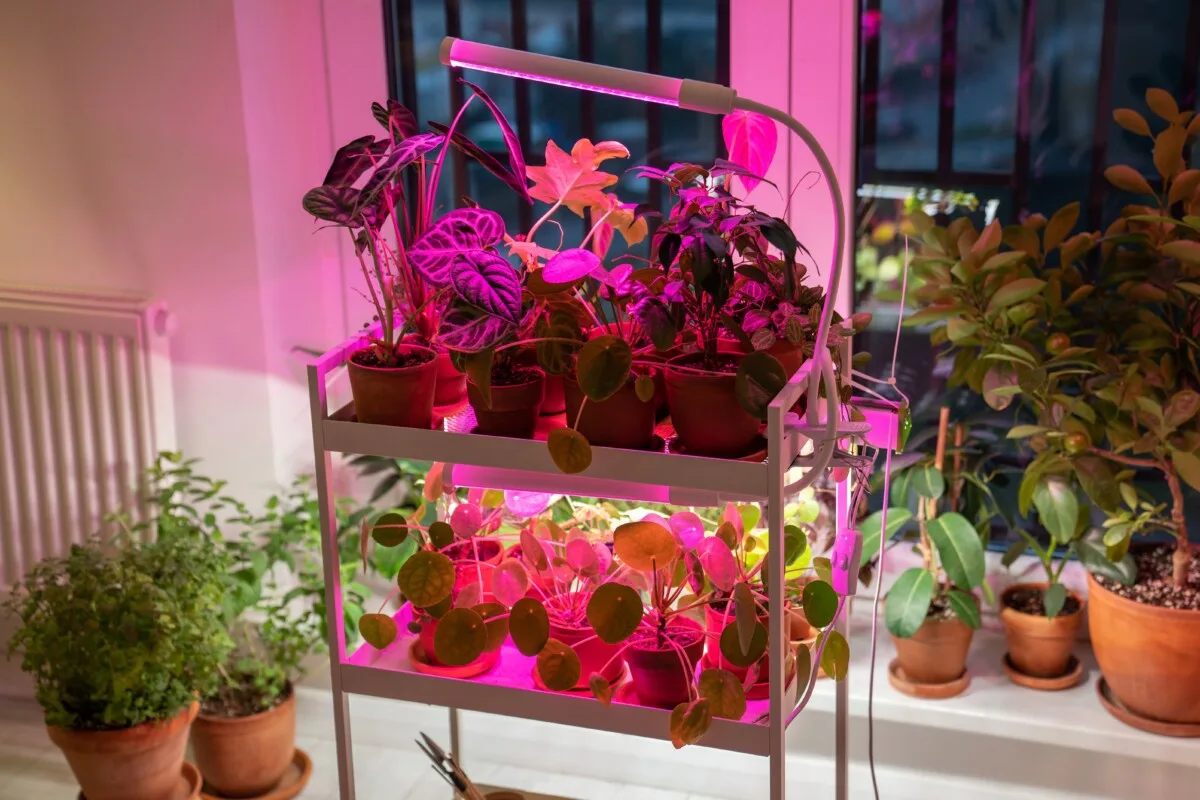
With fewer daylight hours, a plant’s usual location in your home might not receive enough natural light during the winter. Moving your light-loving plants like crotons and monsteras closer to windows – south facing if possible – will help in this instance. In addition, rotate each plant every week so all sides get an equal amount of light. Take this opportunity to give your windows a quick clean, too, as it makes it easier for light to get in.

If your window space is limited, investing in a portable grow light can make all the difference. You can place your plants in whatever location you like at home, regardless of the natural light available.
Alternatively, you can replace some of your regular light bulbs with full-spectrum lights.
While they look almost indistinguishable from normal lights to us, these bulbs cover more red and blue wavelengths and can help with plant growth as a result – just keep them on for a minimum of 6-7 hours a day to reap the benefits. As a bonus, full-spectrum lights also help with Seasonal Affective Disorder.
2. Reduce your regular watering schedule
One of the easiest and most crucial changes to make during the winter is to the watering schedule.
Because of the winter dormancy that most houseplants experience, you can afford to drastically cut down on watering – a good rule of thumb is only watering every two weeks at a minimum. Instead of adhering to a schedule, though, check the plant itself for its water needs.
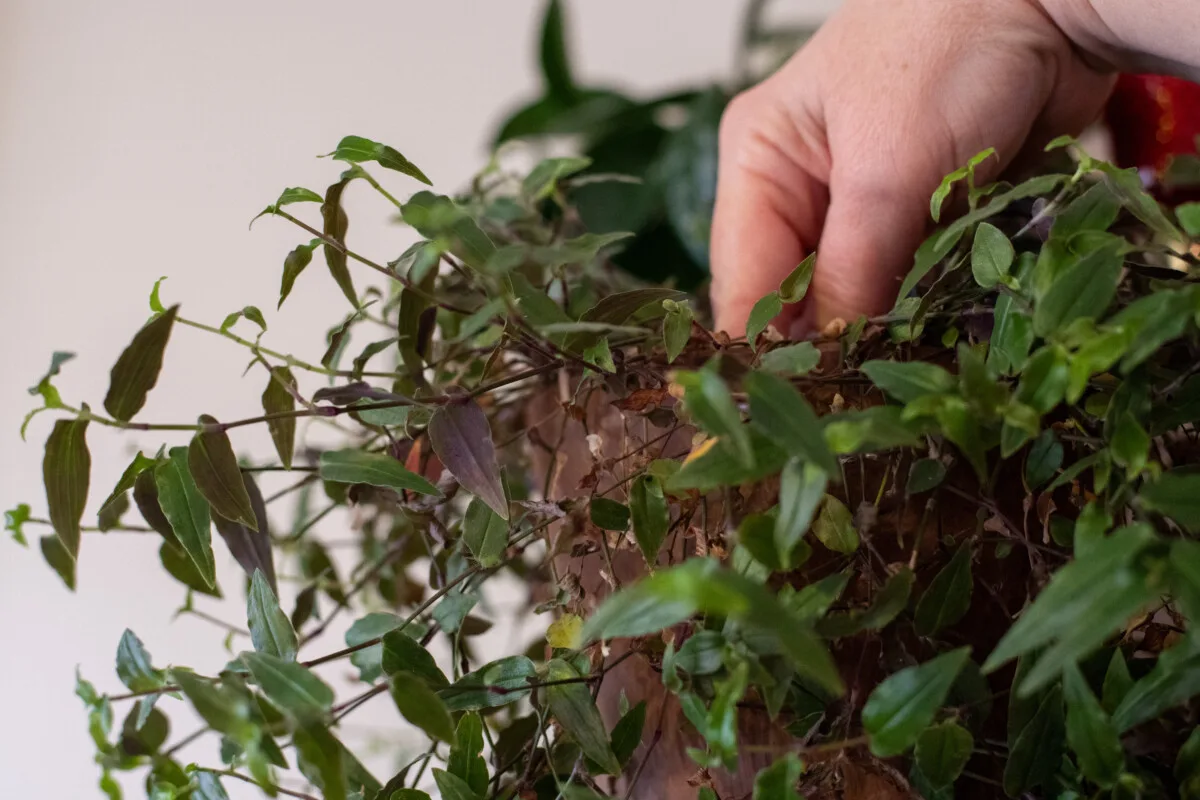
Before watering in winter, note the dryness of the soil by checking the top two inches with the tip of your finger. If it’s completely dry, you can give the plant a drink; if the soil is still moist, then wait a few days before checking again.
Helpfully, some plants will alert you to their watering needs: a peace lily will still droop when it’s thirsty, and a spider plant’s leaves will get paler and less buoyant. For succulents that like a dry environment, even in the summer, you can cut back to every three weeks or more. You can stop watering cacti entirely until the winter is over.
When in doubt, water even less than usual. It’s much easier to rectify a thirsty-looking plant in the winter than desperately trying to reverse any root rot that’s set in.
But be careful. While yellow leaves and brown leaf tips might be more common in the winter, surprisingly, they’re not usually the result of a thirsty plant.
Related reading: The clever instant fix for brown tips on any houseplant (and how to stop it happening again)
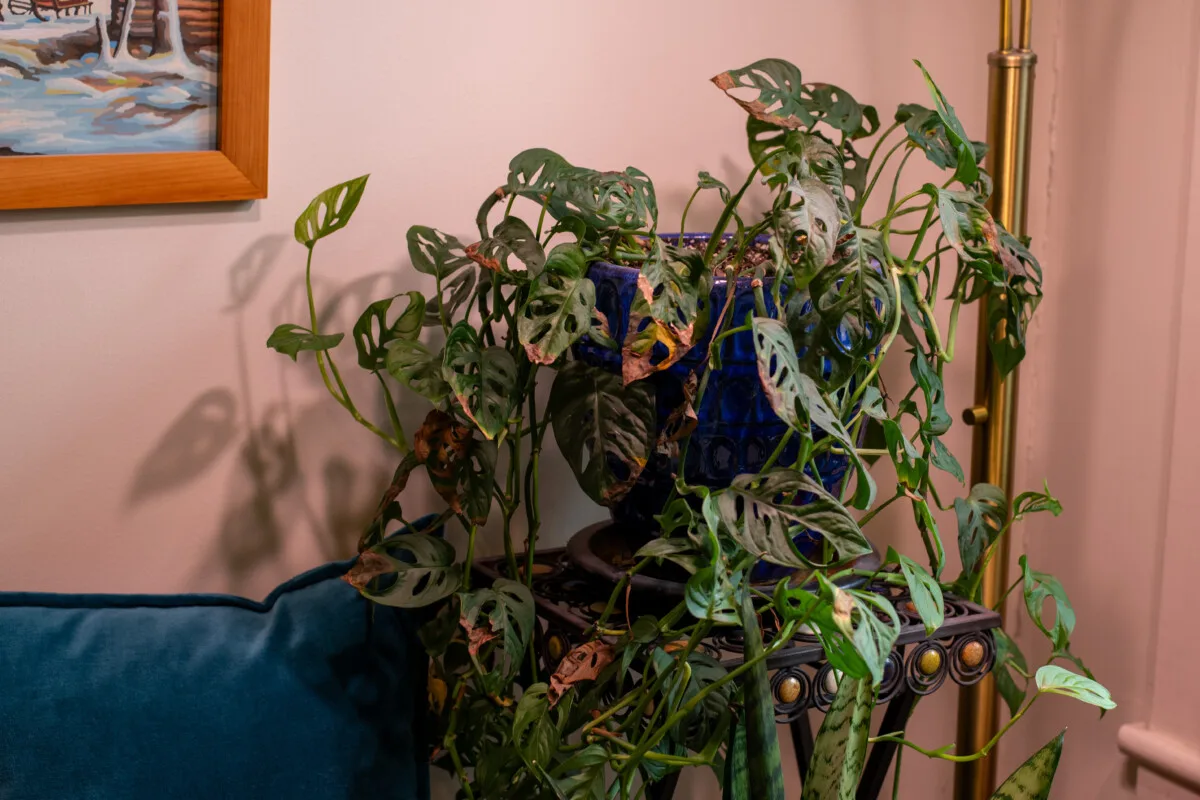
It’s also a good idea to check the temperature of the water before watering, as cold water can seriously shock the roots. Aim for room-temperature water to keep wintering plants happy.
3. Keep an eye on indoor humidity levels
Indoor humidity typically reduces in the winter when we turn on radiators and central heating. As most indoor plants are tropical, they prefer a humidity level of 30% to 40%. The first step is to keep plants away from direct sources of dry air and heat.
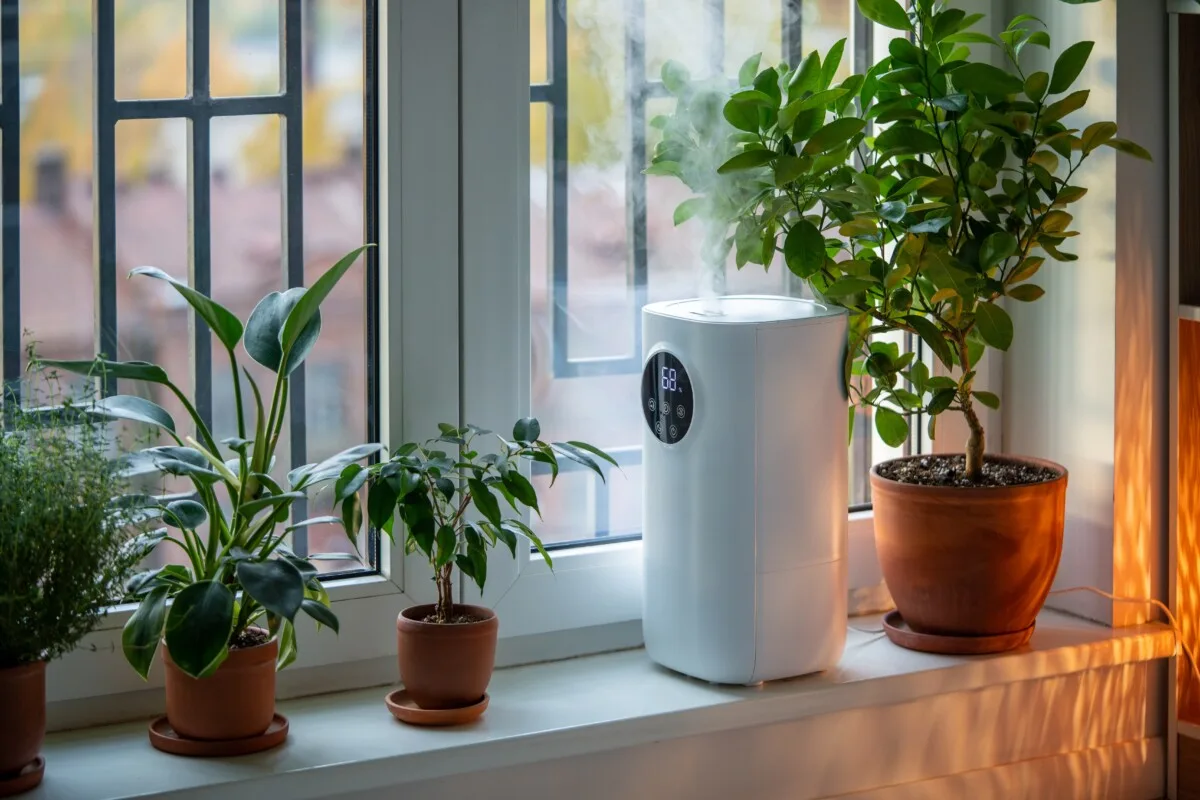
Misting with distilled water can add some moisture to the air. Setting up a small humidifier can also be a good idea. Opting for a smaller size means you’re not adding excess humidity to your house overall, which could lead to an increase in dampness during winter.
4. Protect your plants from cold drafts
Fluctuating temperatures are the bane of winter plant care. Houseplants prefer to be at temperatures of 65-75F and are likely to suffer if temperatures fall below 60F.
That means sweeping your home for drafty windows, doors, and any particularly cold spots. Don’t forget about the temperature of the window glass itself, which is usually pretty frosty to the touch – not good for any far-reaching leaves. Either utilize insulation to block drafts in these spots or, better yet, ensure your plants are kept nowhere near.
Of course, it’s a bit of a problem when a drafty window is also the best place for your houseplants to receive much-desired sunlight.
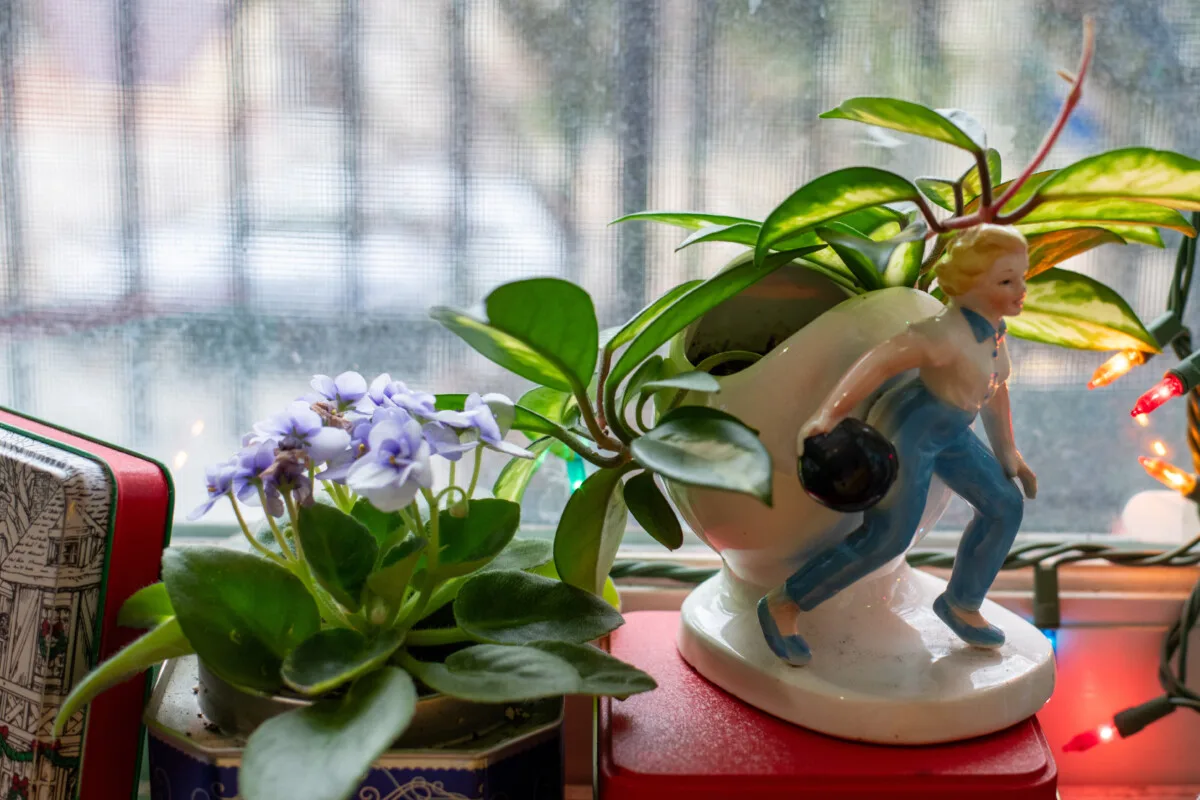
For those who are houseplant-obsessed, it’s certainly possible to move plants away from windows each afternoon once the light has faded and the air grows colder. Alternatively – and also for the most cold-intolerant plants – you can try setting up a little micro-climate to keep them happy. A small space with a warming mat, grow lamps, and a tray of water-covered pebbles for some added humidity will do wonders.
5. Don’t worry if there’s no new growth
Most houseplants won’t produce new leaves or foliage over the winter, so don’t be alarmed if a once-bushy summer plant suddenly stops showing any growth. It means the plant is focusing energy on nourishing the roots and leaves it already has.
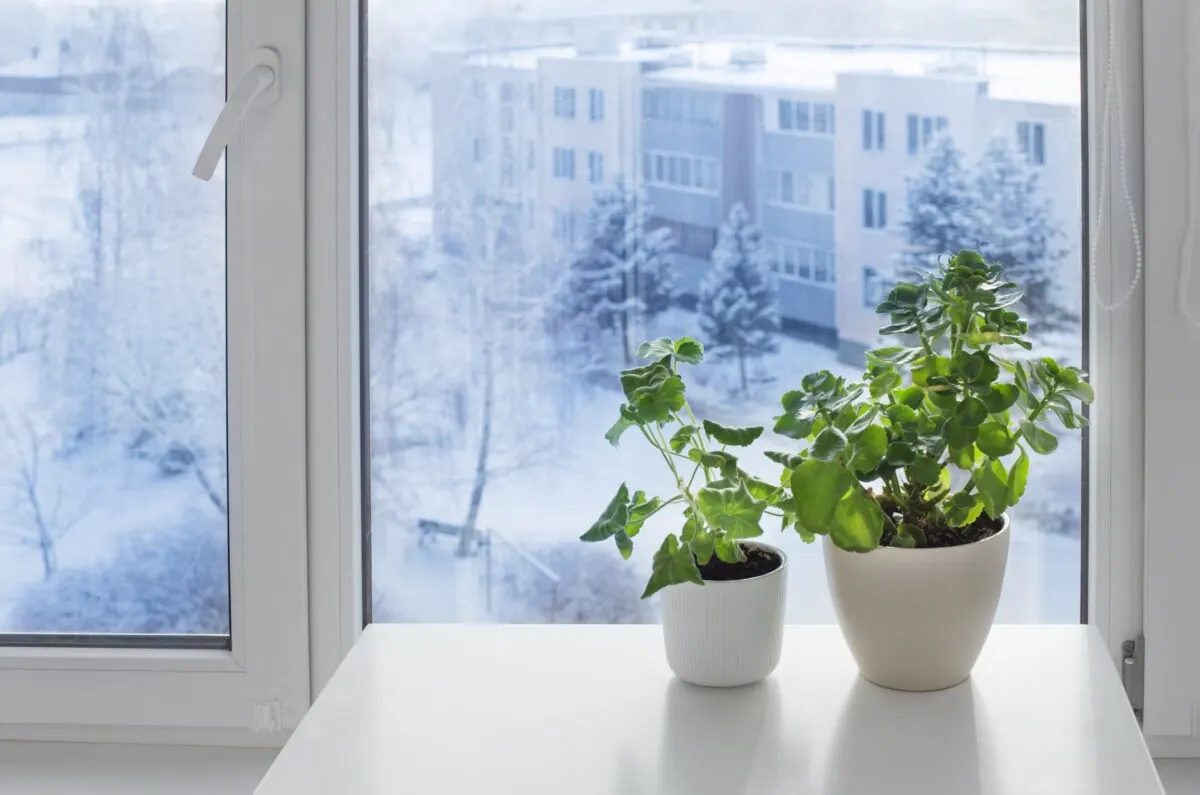
That doesn’t mean all your houseplants are dormant, though. In fact, the warmer your indoor environment remains, the less likely plants will go dormant in the winter. As such, they still need water and light to keep them going.
6. Avoid doing any repotting (especially with dormant plants)
Drop that pot and put your trowel down. Though it may not seem like it at first glance, repotting a plant can be pretty stressful at any time of year – but in winter, you’re effectively shocking the plant at a time when it’s not actively growing. It’s also more likely that the fresh compost will stay wet for longer, which can potentially damage the roots.
If you absolutely have to repot, make sure the plant is kept warm afterward by using a heat mat and perhaps a grow light too.
Repotting vs. Potting Up
Potting up a houseplant (i.e. when you simply add the plant, soil and all, into a slightly bigger pot) is different from repotting (when all the old soil is removed from the root ball and replaced with new soil). Potting up is less shocking, so it’s much more amenable in the winter.
7. Clean dust from your plant’s leaves
Just because your houseplants are dormant and resting over winter doesn’t mean they’re not in need of some general care or upkeep. In fact, the winter season is a perfect time to clean the leaves: it helps plants to make the most of the lower light levels, helps to deter pests, and improves their overall appearance too.
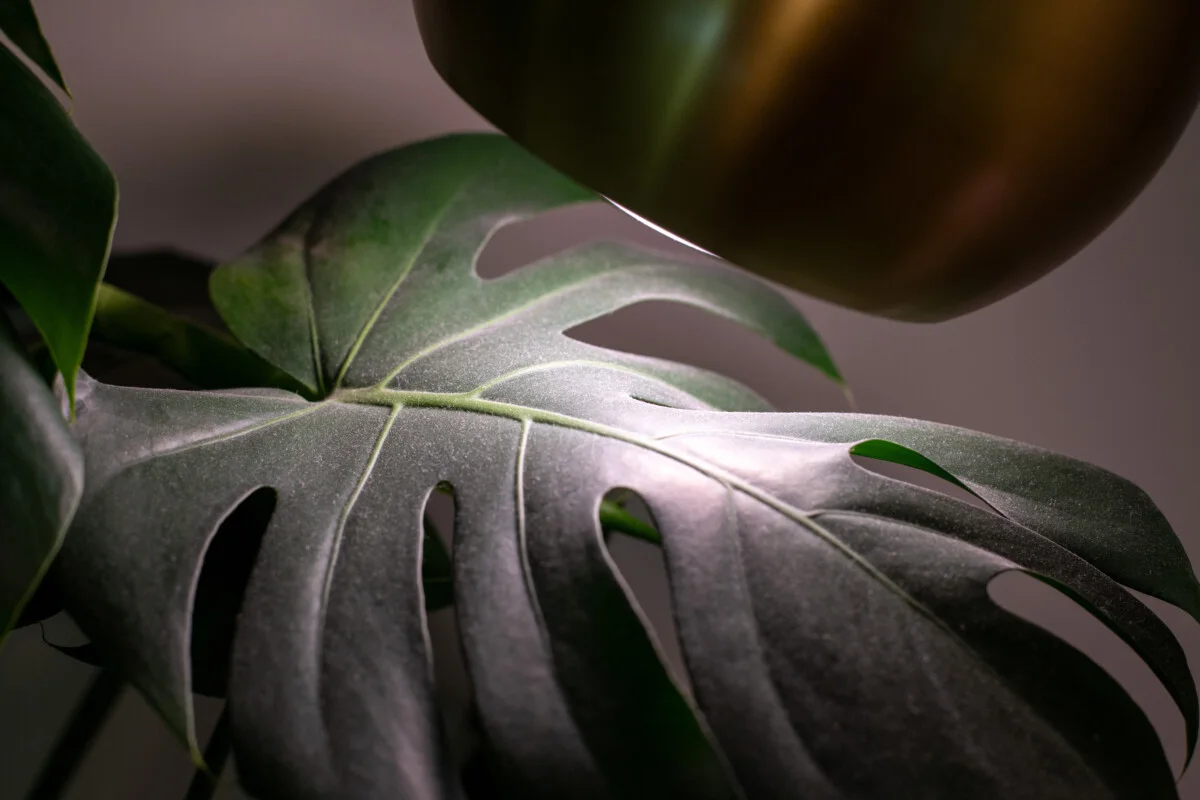
Plants often attract dirt and dust, building up a general residue of stickiness that affects their ability to absorb sunlight and photosynthesize. If you can feel a layer of dust when you rub the leaves, then it’s time to clean them.
Cleaning your houseplant’s leaves is an easy project: Simply take a cloth or paper towel dampened with warm water and gently wipe the surface of each leaf. Make sure to support each leaf from underneath to avoid breaking the stems, and don’t use a scratchy sponge or cloth, as these can damage the leaf tissue.
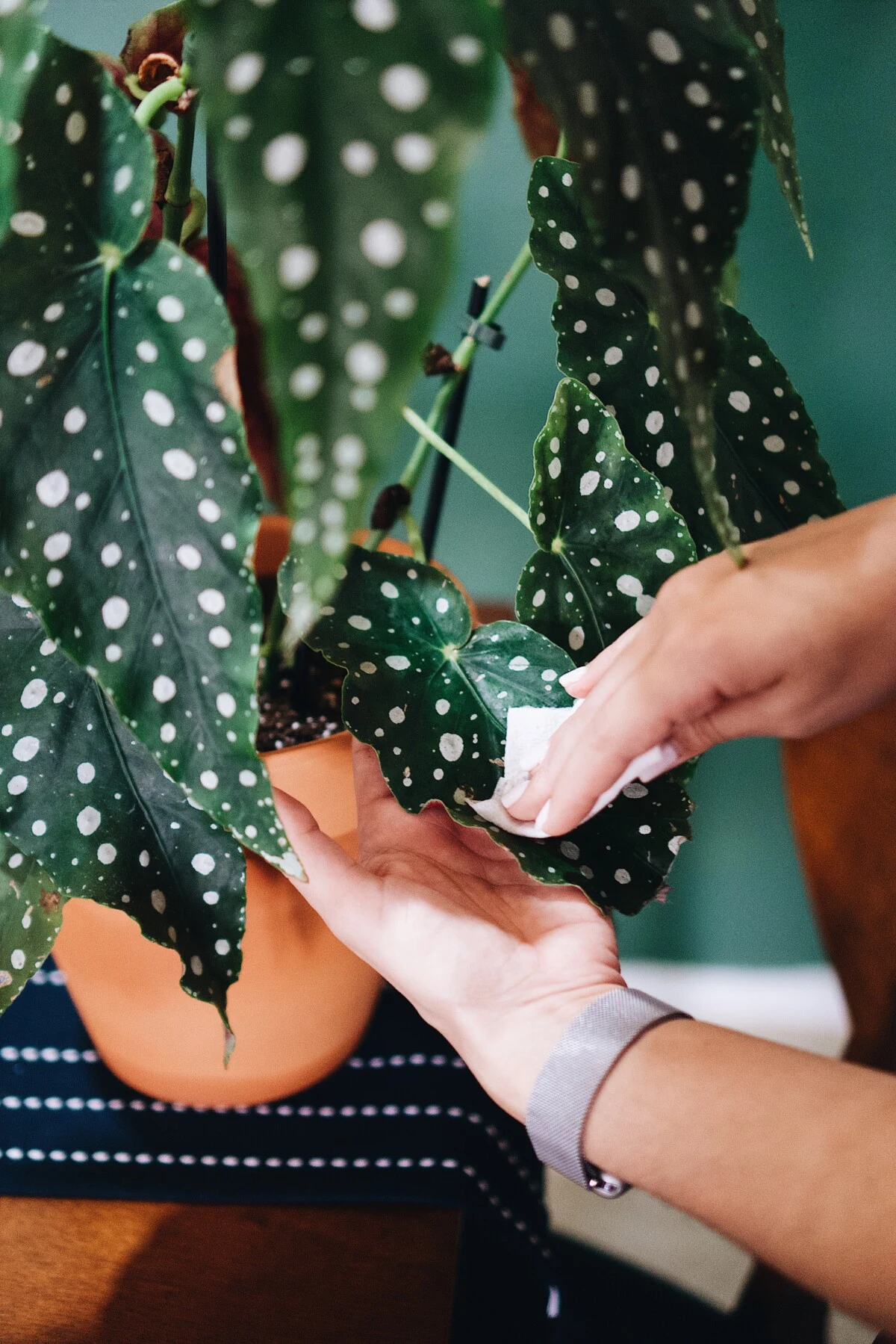
More delicate and feathery plants are a little trickier to clean (maidenhair ferns, I’m looking at you). You can use a paintbrush, a cotton pad, or even Q tips. Alternatively, using a misting bottle to spray the leaves can achieve much of the cleaning process without actually needing to touch each leaf.
For particularly tall plants that are hard to reach, using a feather duster for the uppermost leaves is also a useful trick.
8. Prune and tidy up
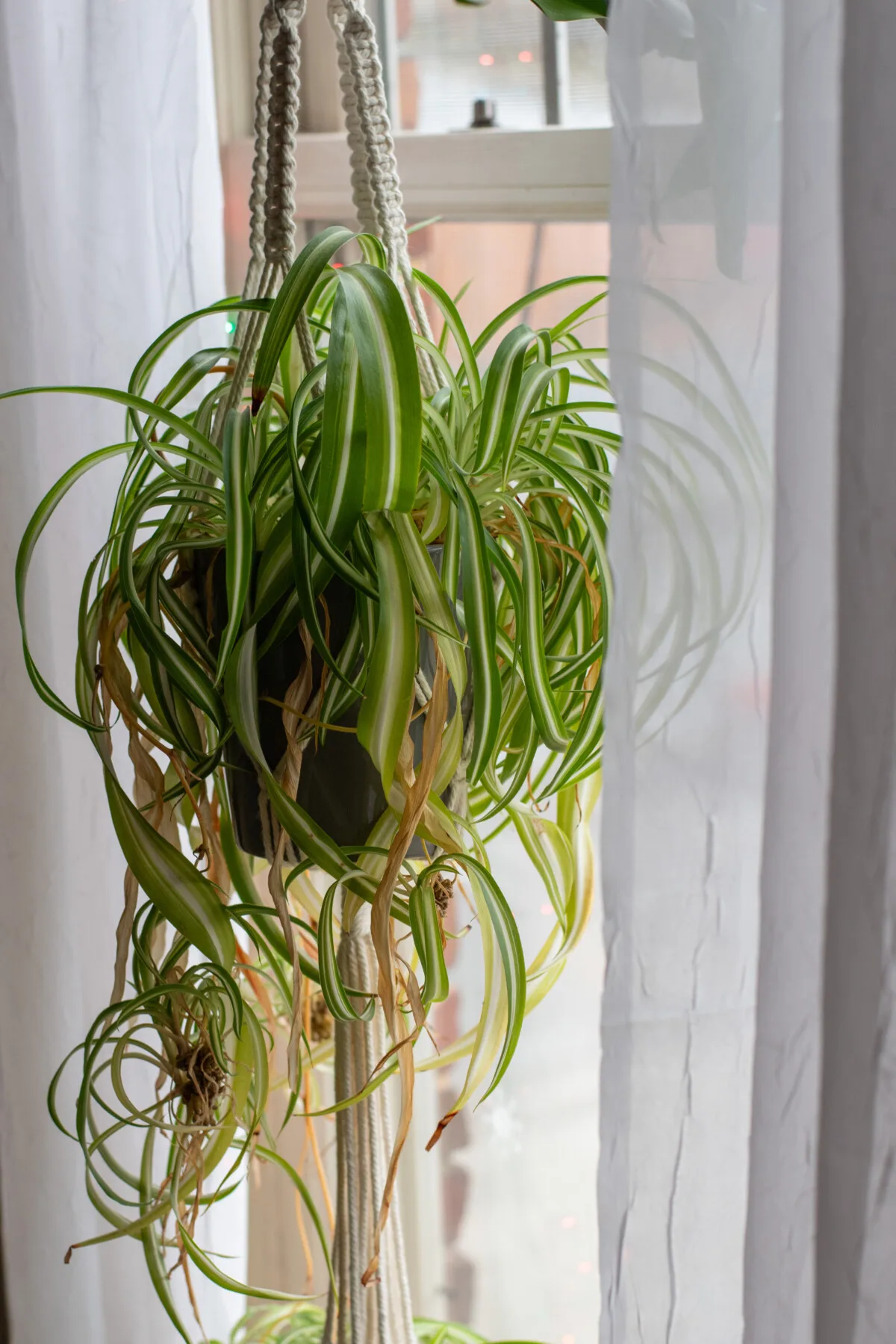
Along with cleaning your plant’s leaves, why not do some tidying up too? A houseplant will be wasting energy on any deadened branches and dying leaves, so cutting back those crispy bits will both improve the plant’s appearance and keep it healthier.
An added bonus of pruning in winter is that you can still experience a bit of plant magic by propagating. Pothos and pilea plants are hardy enough to grow over winter, and they’ll be ready for potting up in the spring. You could also use a little rooting hormone on the propped cuttings to encourage them to put out roots.
9. Don’t fertilize or feed houseplants in the winter
Fertilizer is an integral part of houseplant care in the warmer months. Fertilizing while plants are dormant can be damaging and lead to fertilizer burn. That’s because while plants are dormant, they have fewer nutrient needs.
Steer clear of your usual fertilizer options until the warmer months, and your plants will thank you.
10. Be vigilant for bugs and pests
Unfortunately, a cozy, warm environment is the perfect breeding ground for plant pests to thrive. We’re talking thrips, aphids, fungus gnats and mealy bugs galore. These little fiends multiply quickly, taking things from an initial issue to an infestation, so it’s of the utmost importance to get rid of them fast.
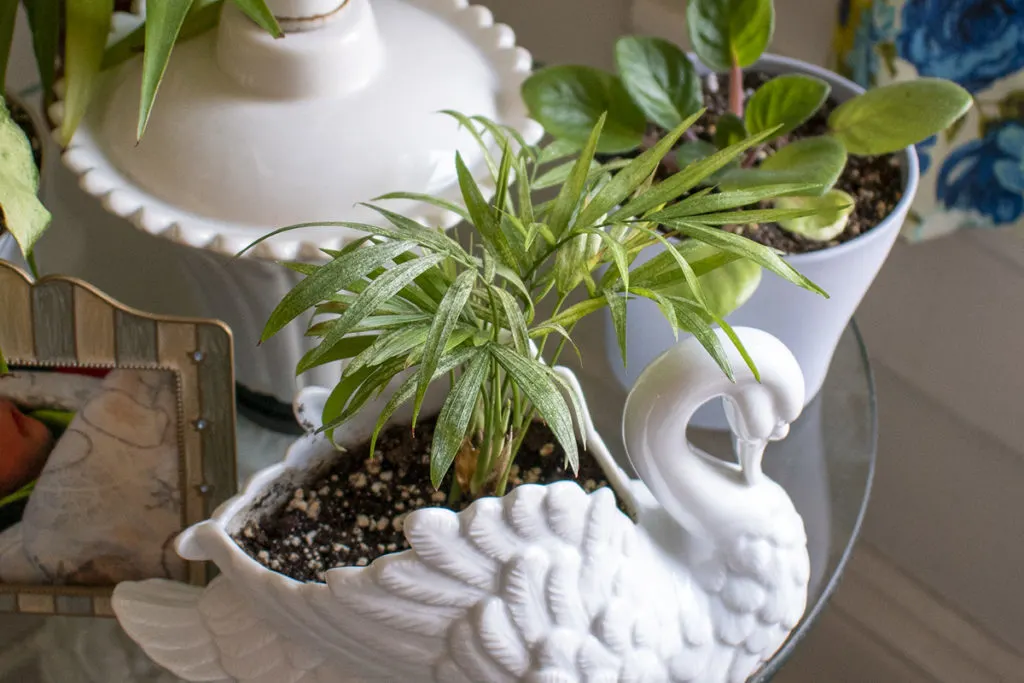
Mix a couple of drops of mild household liquid soap in a spray bottle and spray generously. Then, either wipe the incapacitated bugs off with your fingertips or with a damp cloth. Be sure to inspect thoroughly amongst the undersides of leaves and in the crevices of stems, too. These bugs are experts at hiding.
As a general rule of thumb, you should regularly inspect your plants for bugs throughout the year so that any potential bug infestations don’t get out of control.
11. What to do if your houseplants experience any winter-related damage
Over the winter, you might see leaves beginning to yellow or drop. They might curl up, experience tip burn or begin to shrivel. While all these symptoms may feel like cause for alarm, don’t panic! The majority of plants will go through a bit of an adjustment period and are likely to bounce back.
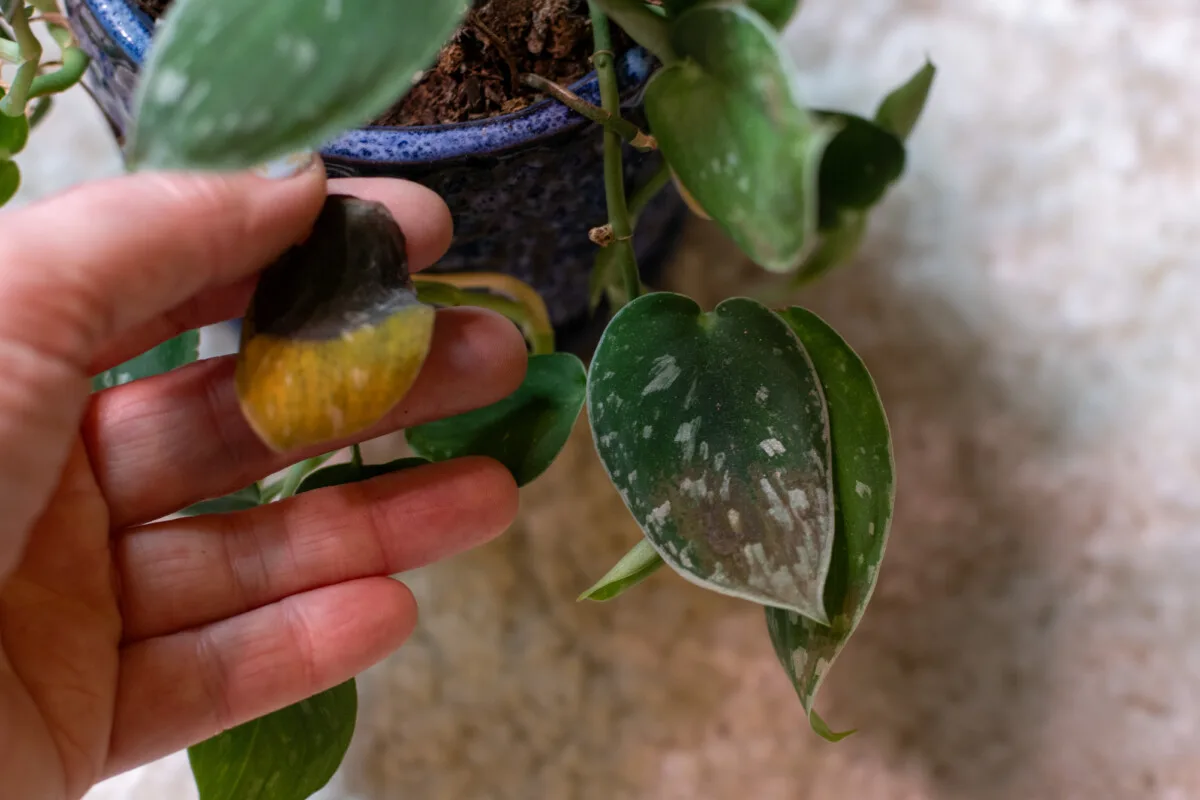
For slightly more serious cases, you can isolate the damage and prune off damaged leaves, allowing the rest of the plant to recover.
If you think it’s a lost cause, inspect the root ball, as this will be the most informative way to see if the plant still has a fighting chance.
And if you do end up losing a houseplant or two to the winter months? Well, that just means you’ve got a spare pot that needs filling in the spring!

Get the famous Rural Sprout newsletter delivered to your inbox.
Including Sunday musings from our editor, Tracey, as well as “What’s Up Wednesday” our roundup of what’s in season and new article updates and alerts.
